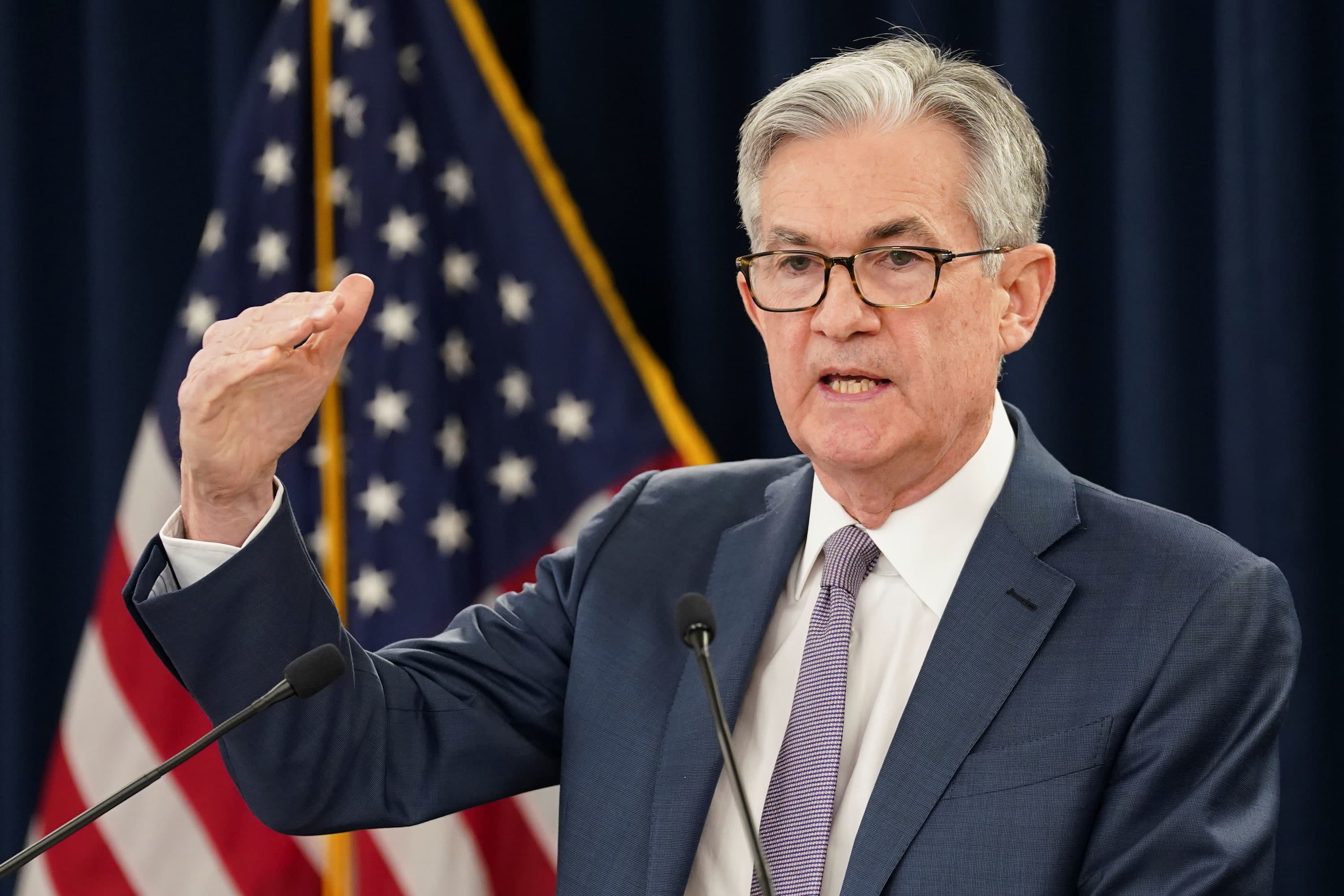
The Federal Reserve kept interest rates near zero and indicated that’s where they’ll stay as the economy recovers from the coronavirus pandemic.
Along with the rate decision, central bankers projected Wednesday that the economy will shrink 6.5% in 2020, a year that saw an unprecedented halting of business activity in an effort to combat the coronavirus pandemic. However, 2021 is expected to show a 5% gain followed by 3.5% in 2022, both well above the economy’s longer-term trend.
The central bank repeated its commitment from the April meeting that it “expects to maintain this target range until it is confident that the economy has weathered recent events and is on track to achieve its maximum employment and price stability goals.”
The Fed also said it will continue to increase its bond holdings, targeting Treasury purchases at $80 billion a month and mortgage-backed securities at $40 billion.
The Federal Open Market Committee met this week as states begin to reopen and after unemployment saw its worst monthly drop in history followed by its biggest gain. In addition, the meeting comes the same week the National Bureau of Economic Research declared that a recession started in February, ending the longest expansion in U.S. history.
Chairman Jerome Powell said the economic projections were made with the “general expectation of an economic recovery beginning in the second half of this year and lasting over the next couple of years, supported by interest rates that remain at their current level near zero.”
In early march, the Fed slashed the target range for its overnight funds rate to 0%-0.25%, where it last was during the financial crisis. The rate serves as a benchmark for short-term bank borrowing and also serves as a guide for most consumer borrowing.
Fed officials skipped releasing their quarterly economic projections at March meetings as uncertainty permeated over how long the U.S. would remain in stay-at-home mode and how deep the damage would be.
They did release their forecasts this week. Here are the key numbers for 2020, followed by the next two years and the long-run projection:
Fed funds rate: 0%-0.25% through 2022, with the long-run rate at 2.5%
GDP: -6.5% in 2020, 5%, 3.5%, 1.8%
Unemployment: 9.3%, 6.5%, 5.5%, 4.1%.
Headline inflation: 0.8%, 1.6%, 1.7%, 2%.
Core inflation: 1%, 1.5%, 1.7%.
Markets reacted positively to the news, with stocks coming well off their lows of the day and edging toward positive territory.
“Analyzing the Fed’s economic projections at this time when much of the economy is still opening is riddled with uncertainties. This is an economic recession with no precedent,” said Danielle DiMartino Booth, CEO of Quill Intelligence and former advisor to the Dallas Fed.
Investors had been watching the statement for how accommodative the Fed would continue to keep policy. The bond purchases were seen as critical given that the Fed has scaled back its purchases sharply. The buying went from a peak of $300 billion a month in Treasurys during the early days of the coronavirus crisis to $20 billion a weekmore recently.
In a separate statement, the Fed said it would maintain purchases “at least at the current pace to sustain the smooth functioning of markets for these securities, thereby fostering effective transmission of monetary policy to broader financial conditions.”
Even with the deceleration, though, the Fed’s balance sheet where it keeps its asset holdings has exploded to more than $7.2 trillion.
Through their individual projections, members indicated a decidedly dovish stance ahead.
“We’re not thinking about raising rates. We’re not even thinking about thinking about raising rates,” Powell said. “What we’re thinking about is providing support for the economy. We think this is going to take some time.”
The “dot plot” of committee members’ rate expectations shows little dissent about keeping rates anchored through 2022. The committee’s 17 members unanimously saw the the near-zero stance holding through 2021, and only two expected that to rise in 2022. No members indicated negative rates, a question that has come up repeatedly for Fed officials during public appearances.


 Signal2forex.com - Best Forex robots and signals
Signal2forex.com - Best Forex robots and signals




